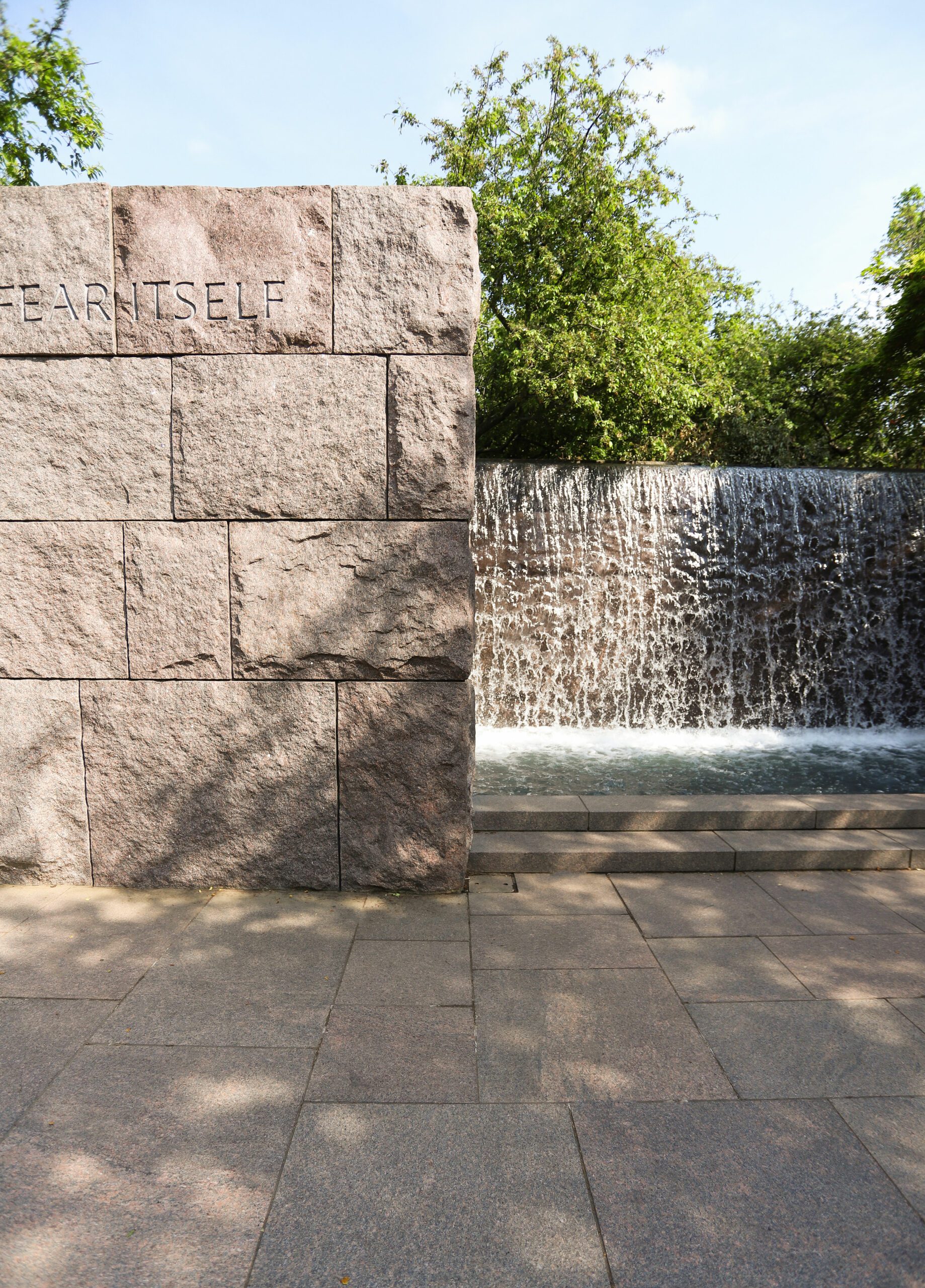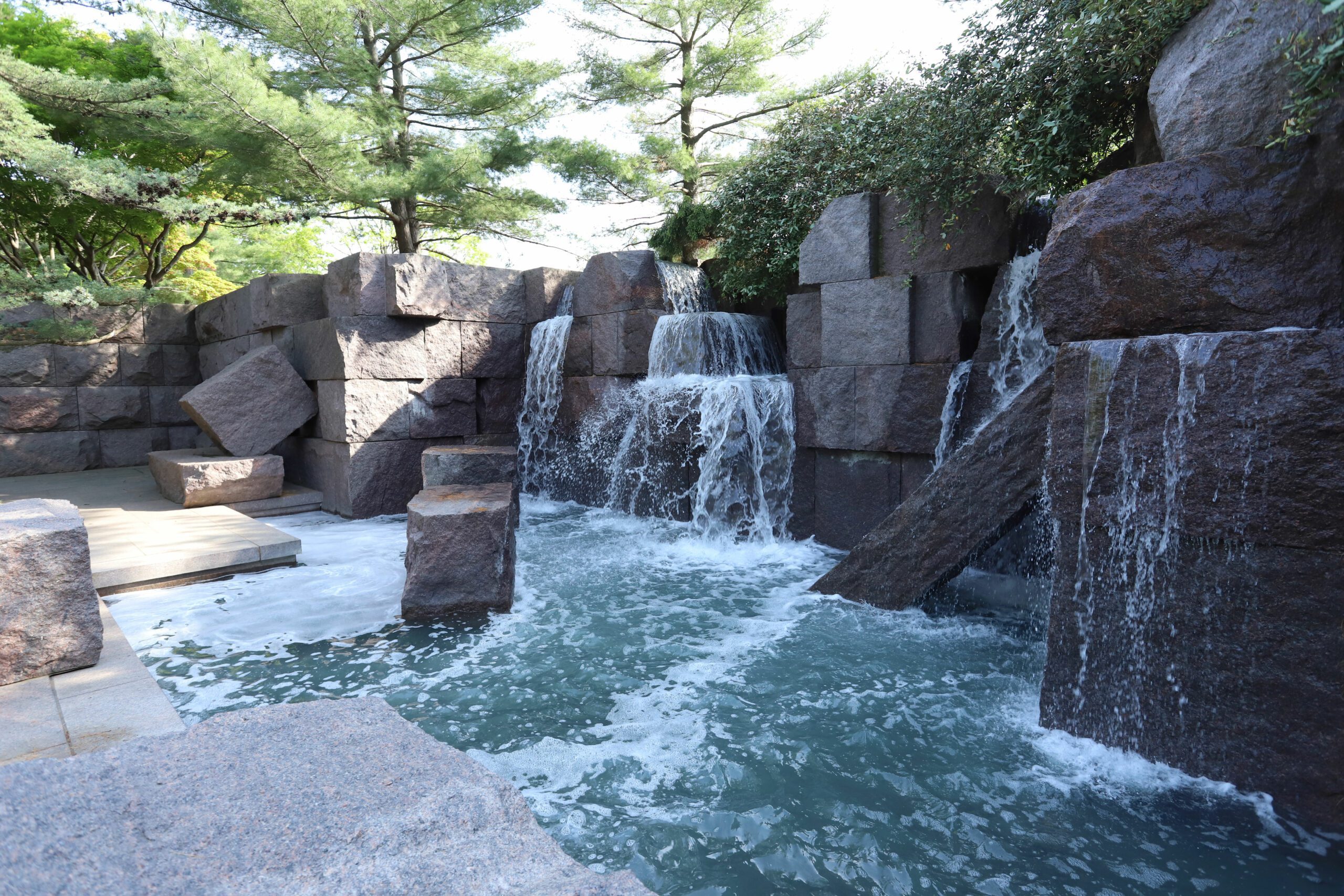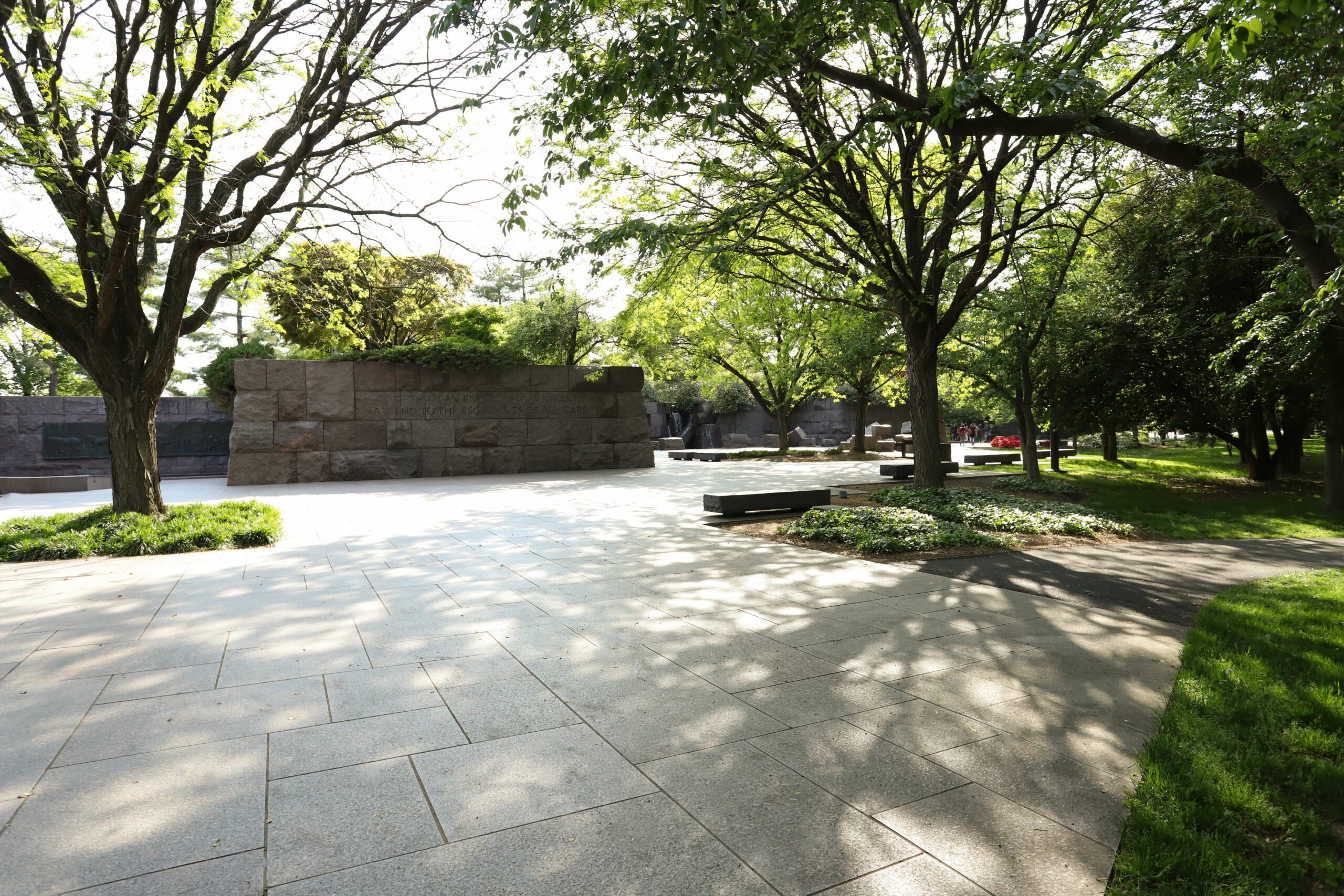Lawrence Halprin
Lawrence Halprin
Grunley Construction
 The national memorial dedicated to Franklin Delano Roosevelt, the 32nd president of the United States, lies about halfway between the Lincoln Memorial and the Thomas Jefferson Memorial in Washington, DC. Its four open-air rooms represent each of the four terms of office to which he was elected. A meandering pathway leads past waterfalls, bronze sculptures, and FDR’s own powerful words carved on the granite walls. The memorial honors the memory of one of America’s great leaders and the optimism and courage that he shared with his fellow citizens through the ordeals of the Great Depression and World War II. A statue of Roosevelt sitting in a wheelchair greets visitors and reminds them of the man who refused to let disability stop him.
The national memorial dedicated to Franklin Delano Roosevelt, the 32nd president of the United States, lies about halfway between the Lincoln Memorial and the Thomas Jefferson Memorial in Washington, DC. Its four open-air rooms represent each of the four terms of office to which he was elected. A meandering pathway leads past waterfalls, bronze sculptures, and FDR’s own powerful words carved on the granite walls. The memorial honors the memory of one of America’s great leaders and the optimism and courage that he shared with his fellow citizens through the ordeals of the Great Depression and World War II. A statue of Roosevelt sitting in a wheelchair greets visitors and reminds them of the man who refused to let disability stop him.
When Congress established the Franklin Delano Roosevelt Memorial Commission in 1955, there was already a modest memorial to Roosevelt in Washington, DC. Roosevelt told his friend Felix Frankfurter what he wanted: “a block about the size of [this desk] . . . in the center of that green plot in front of the Archives Building.” The new, larger memorial took over 40 years of planning before its dedication on May 2, 1997.
The FDR Memorial Commission selected landscape architect Lawrence Halprin to design the memorial in 1974. The result, with its shade trees, waterfalls, and quiet alcoves, feels more like a secluded garden than a traditional memorial. Walls of durable Carnelian granite, known for its strength and longevity, sourced from quarries in South Dakota, define the memorial’s outdoor rooms and the passageways connecting them. Waterfalls, quiet pools of water, and Roosevelt’s own words, beautifully incised into the Carnelian granite walls by master carver John Benson, create a mood of quiet reflection.
Each room conveys in its own way the spirit of the man. In Room One, a bronze bas-relief of the first inauguration, one of the early public sculptures created by Robert Graham, introduces the first years of Roosevelt’s presidency when he launched the New Deal in response to the worst economic crisis the nation had ever known. George Segal created the powerful sculptures in Room Two. The Breadline represents the despair of the Great Depression. The Fireside Chat depicts the hope that Roosevelt’s inspiring words gave to ordinary people.
In Room Three of the memorial, a waterfall crashes over scattered boulders, suggesting the destruction and violence of World War II, which dominated Roosevelt’s third term in office. Neil Estern created the statues of Roosevelt and his beloved dog, Fala, calmly presiding over the chaos surrounding them. Franklin D. Roosevelt’s hopes for the future are engraved on the Carnelian granite wall next to his statue:


The centerpiece of Room Four is a monumental bas-relief created by sculptor Leonard Baskin. The Funeral Cortege represents the nation in mourning after the death of the only president many of them could remember. Neil Estern’s statue of Eleanor Roosevelt honors her contributions as first lady and as one of the early delegates representing the United States at the newly formed United Nations.
One of the things visitors to the Franklin Delano Roosevelt Memorial see is a simple but powerful statue of FDR sitting in the kind of wheelchair he used after the polio attack that paralyzed his legs in 1921. Halprin carefully designed the FDR Memorial to be accessible for people with all kinds of disabilities, but the original plans did not include this sculpture. Spokespersons for the disabled protested, arguing that showing the truth of FDR’s paralysis, something that he himself rarely allowed, would increase awareness and set an inspiring example for others who struggled with disability. Congress agreed, recognizing the importance of depicting Roosevelt’s indomitable spirit. To create this significant sculpture, renowned artist Robert Graham utilized his artistic prowess to capture the essence of FDR’s resilience.
In addition to the remarkable design and thought-provoking sculptures, the choice of Carnelian granite for the memorial’s 12-foot-high walls has played a crucial role in preserving its magnificence throughout the years. Carnelian granite, known for its durability and resistance to weathering, was carefully selected for its ability to withstand the test of time. Even almost 25 years after its installation, the Carnelian granite walls of the FDR Memorial look as good as they did on the day of their completion.


The use of Carnelian granite ensures that the memorial continues to inspire visitors with its grandeur and enduring beauty. The material’s strength and longevity speak to the resilience and steadfastness of the man it honors. As visitors trace their fingers over the words engraved on the granite walls, they can appreciate how this choice of stone has allowed FDR’s legacy to remain vivid and intact.
To discover more about the kinds of creations Coldspring has made with our materials, reach out to us today.